In many traditions present throughout the world, transversal to every era and every culture, there is talk of caves or even entire underground worlds inhabited by a lineage of beings endowed with extraordinary faculties: great magicians, mystics, shamans or heroes of the past who they retreated there il tempore and from which they will emerge again in a distant future, when the present cosmic cycle ends and a new one begins. Buddhism, since its origins, has been no exception.
di Lorenzo Maria Colombo
In Xanadu did Kubla Khan
S.T. Coleridge, kubla khan
A stately pleasure-dome decree:
Where Alph, the sacred river, ran
Through caverns measureless to man
Down to a sunless sea…
Ancient Buddhism
In many traditions present throughout the world, transversal to every era and every culture, we talk about caves or even entire underground worlds inhabited by a lineage of beings endowed with extraordinary faculties: great magicians, mystics, shamans or heroes of the past who have retreated there il tempore and from which they will emerge again in a distant future, when the present cosmic cycle ends and a new one begins.
Buddhism, since its origins, has been no exception: already in the commentaries on Sutta Nipāta, which is part of the Pāli Canon, is spoken of three caves, Suvannaguhā, Maniguhā and Rajataguhā, which would open onto the slopes of Gandhamādana beyond the seven mountain ranges surrounding Mount Meru (the axis mundi of Indo-Buddhist cosmology); i would live here Pratyekabuddha, that is, those individuals who, by virtue of the merits accumulated in previous eras, were able to reach the supreme Realization independently, without having to rely on the practices handed down by Buddhist teaching. In one of these caves, at the foot of the mythological Mañjūsa tree, there would be a special platform surrounded by seats called Ratananamālaka around which all the Pratyekabuddhas would gather on the occasion of the uposatha (the Buddhist midweek holiday, based on the phases of the moon) and also to welcome the arrival of the new newly Realized Pratyekabuddhas. Another tradition speaks of the Mahāpapāta, a mountain in the Himalayan chain where the Pratyekabuddhas retreat to die, while in theIsigili sutta (MN 116) in relation to the Pratyekabuddhas mention is made of Sage's Throat (Isigili) near the city of Rajagrha:
So I heard. Once upon a time the Exalted One dwelt near Rajagrha, at the mountain of the Sage's Throat. There now the Exalted One addressed the monks saying: 'O monks.'
'Venerable Sir,' they replied.
'O monks, do you see Mount Vebhāra?'
'Yes, O Lord'
'It once had another name, another denomination. Do you see Mount Paṇḍava… Mount Vepulla… Mount Vulture Peak? Once upon a time it had another name, another denomination. But do you see the mountain of the Sage's Gorge?'
'Yes, O Lord'
'It has always had the same name, the same denomination. In ancient times, O monks, five hundred Pratyekabuddhas for a long time settled on this mountain. They saw themselves enter; entered, they no longer appeared. The people looking at him said: This mountain swallows the Wise! And Gola del Saggio was precisely the name that was given to him [...].

Also probably attributable to the cultural milieu of ancient Buddhism, but with a more explicitly eschatological outcome, is the tradition according to which the Venerable Mahākāśyapa, direct disciple of the Buddha and first Patriarch of the Chan/Zen tradition, he would never die, but would retire in one state of suspended animation in a cave somewhere on Gurupādāḥ mountain southeast of the holy city of Bodhgayā; He will only come out from here to say hello the advent of Maitreya, the future Buddha who will appear when our world has transformed again into a Pure Land and humanity will enjoy the splendors of a renewed Golden Age.
However, we must wait for a subsequent evolution of Buddhist thought, and in particular the Vajrayāna tantric tradition, to discover a completely peculiar development of this mythological apparatus, or a corpus of practical teachings which would effectively allow the miste to access the underworld to achieve a superhuman state.
Esoteric practices
With the term pātālasiddhi or “attainment of the pātāla” refers to a set of practices and exercises of an esoteric nature aimed precisely at the descent into the underground realms (pātāla) where the Nāga (a race of gigantic serpents endowed with magical powers), the Asura (Indian equivalent of the titans present in Greek mythology) and a multitude of other categories of spirits and supernatural beings.
Let us note in passing that in the cosmology of ancient Buddhism the pātāla, understood as a series of "layers" located below the earth's surface but above the actual hells (naraka) where the wicked suffer retribution for their works, it did not exist; there is no trace of it, for example, in the various versions of theAbhidharma, and nāgas and asuras are said to reside below the surface of rivers, lakes, or oceans rather than underground. The appearance of the pātāla in the esoteric Buddhist doctrine is therefore in all probability due to the influence of Hinduism; such subterranean realms, generally seven in number, are in fact described in great detail in Hindu texts such as Bhāgavata Purāṇa (which speaks more precisely of bilasvarga, “underground paradises”) and the Viṣṇu Purāṇa.
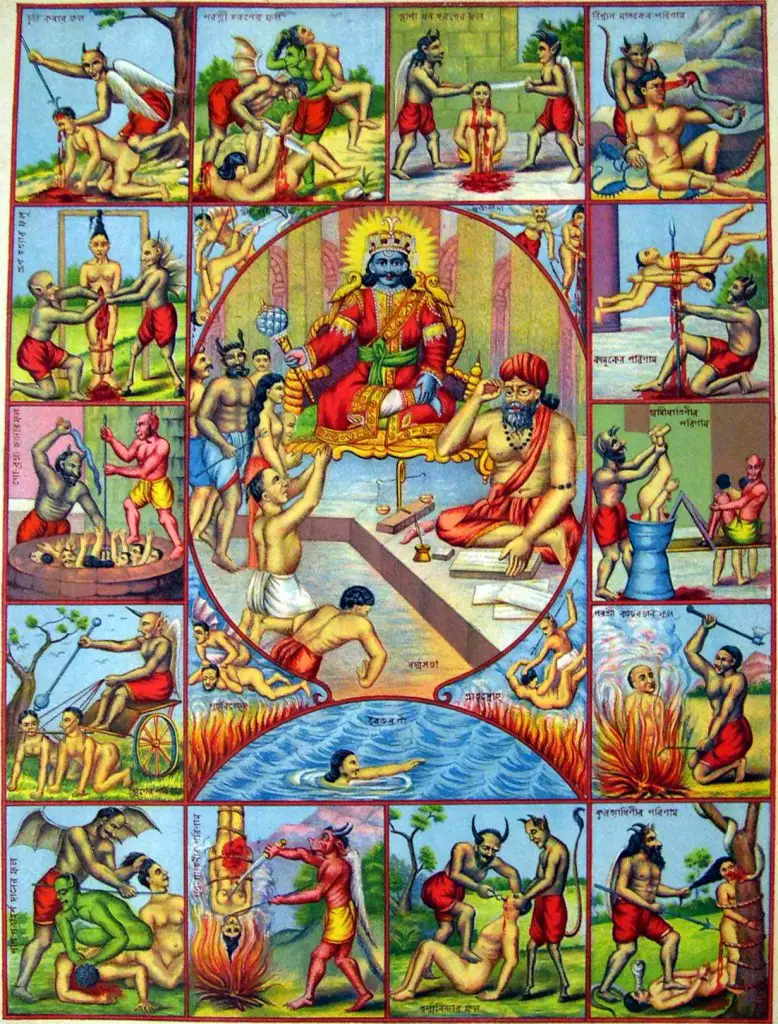
The pātālas, far from being gloomy caverns, are represented as bright places with luxuriant vegetation, and their inhabitants reside in jeweled palaces who have nothing to envy those of the celestial divinities. The nāgas, who can also take on a human appearance if necessary, love to decorate their bodies with precious stones of the most beautiful water, and the asura girls are said to be so fascinating that they can seduce even the most misogynistic and austere ascetic. Yet, at least in the case of the asuras, this represents a paradisiacal state a prison, albeit one with golden bars: the Hindu and Buddhist texts, in a series of accounts that are also profoundly divergent from each other, tell us that these beings were confined to the underground or underwater world after having been defeated by the gods led by Indra, the divinity of lightning, of rain and magic.
The idea that natural caves and caverns believed to be homes of asuras could be used to descend into the underground realms and obtain paranormal faculties occurs in some of the oldest texts of Tantric Buddhism, which have come down to us both in the original Sanskrit and in the Chinese translation: among them the Mañjuśrīmūlakalpa,Āryavajra Pātāla Nāma Tantrarāja, Sādhanamālā and Kaṇikrodha Vajrakumāra Bodhisattva Sādhana Vidhi. Such texts are generally considered to be part of the class of kriyātantra, where much emphasis is given to practices such as ritual ablutions, the use of seals (mudrā) made with hand gestures or even with the whole body and the recitation of mantras. We read in Kaṇikrodha the instructions given by the Bodhisattva Vajrapāṇi:
Whoever wishes to dwell in the palaces of the asuras to enjoy their pleasures should go to the entrance of the cave of the asuras and form an elephant goad (aṅkuśa) with reed canes. Let him recite the mantra of Vajrakumāra seven times to give power to his goad, then make it rotate in the air to the right next to the entrance. Thanks to the recitation of the mantra alone this will open […]. There is also another ritual. If the master of the formulas recites the mantra a hundred thousand times in front of an asura cave into which his companions have already penetrated, the masters of the formulas who had previously entered the cave will come out and welcome him, then guide him inside until to the palaces of the asuras.
As we have seen, the central role in the ritual is played by the repetition of the mantras:
The root mantra of Vajrakumāra is: namo ratnatrayāya namaś caṇḍa vajra pāṇaye mahāyakṣasenāpataye tadyathā oṃ kaṇi hūṃ phaṭ svāhā. There is also a second root mantra that is used for the specific purpose of opening the palaces of the asuras: namo ratnatrayāya namaś caṇḍa vajra pāṇaye mahāyakṣasenāpataye tadyathā oṃ dhuna vidhuna kaṇi krodha sarva yantraṇi hūṃ.
But mudrās also have an importance that should not be underestimated, and certain descriptions cannot help but bring to mind the ecstatic dances practiced by shamans all over the world:
Now I will illustrate the mudrā to be done in a standing position to open the gates of the asura cave. May the master of formulas strike the ground quickly with his feet, stride joyfully, leap forward with ferocity […]. This mudrā is the best of all mudrās, capable of blowing off all the bolts of the asura cave.
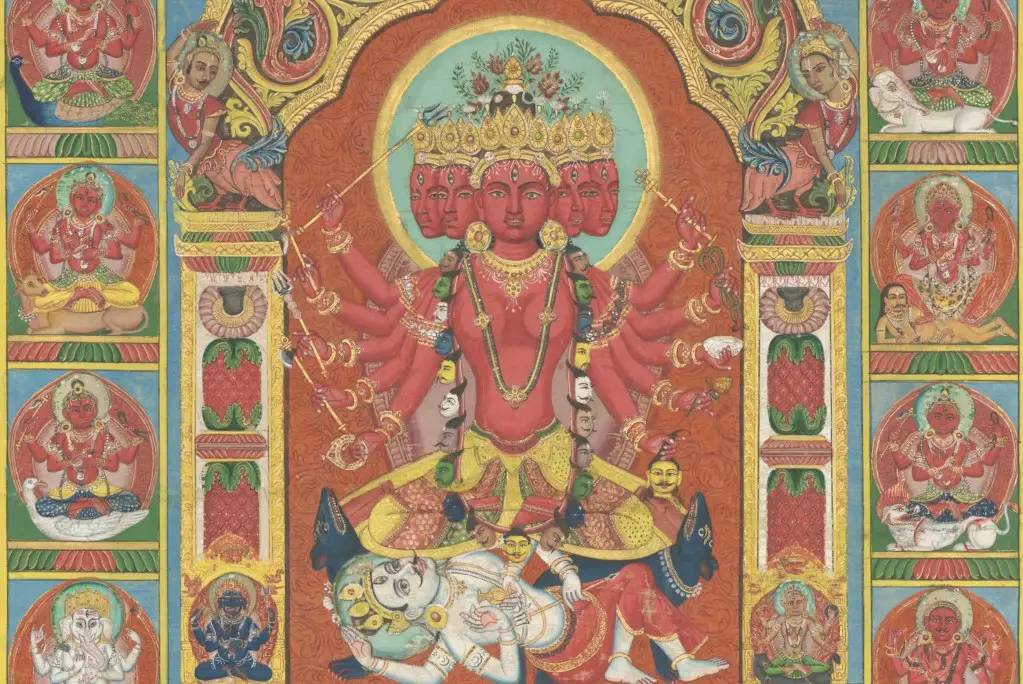
Between eroticism and eschatology:
the purposes of the descent into the underworld
The mixed man could have intended to visit the underworld for various reasons: one of them was the enjoyment of the sexual pleasures offered by the asura girls, but even in this apparently rather prosaic case elements seem to emerge that refer us to eschatological conceptions much deeper and more complex. It is said for example in Mañjuśrīmūlakalpa that:
Buddhist mantra-mastering yogis who desire erotic union with supernatural females can invoke all categories of asuras or other supernatural females using their mantras, and dwell with them in the pātālas for the duration of an entire aeon (kalpa). So when Maitreya finally comes, they will hear her teaching and become Realized. But those who have thus subjugated an asura woman are henceforth forbidden to even touch a human woman.
Similarly we read in the aforementioned Kaṇikrodha:
[Inside the asura cave] the female asuras will reveal themselves and say to the formula master: 'O noble lord, please enter our cave and take the pleasure you desire.' When he has gained the entrance he can remain in the cave for an entire eon, enjoying heavenly delights.
Another valid reason for delving into the underworld, always linked to the search, if not for actual immortality (every conditioned phenomenon, Buddhism teaches, is impermanent) at least for a extraordinary prolongation of human life, was made up of alchemical, herbal and magical knowledge with which the asuras were thought to be endowed; thanks to them the practitioner would have been able to avoid death for a long time and wait for Maitreya without risking falling back into the suffering and uncertainty of the samsaric condition. And, of course, the writers of the texts do not hold back in describing chests overflowing with priceless treasures and jewels superior to anything a human goldsmith could produce in order to further emphasize how desirable the pātāla are.
However, although these descriptions tend to lead to a fairy tale which perhaps in our eyes clashes a little with the spirit of Buddhist asceticism, one fixed point always remains: we do not descend into the pātāla out of greed for material treasures or to satisfy our desires, but first of all to obtain the knowledge that leads to Realization. For example, the very famous monk Hsüan-tsang tells us that the philosopher Bhāvaviveka, tormented by particularly complex doctrinal questions that he was unable to resolve alone, performed a rite linked to the asura caves very similar to the one described in the Kaṇikrodha in order to prolong your life until the coming of Maitreya and ask Him directly to resolve your doubts.
Just as in the case of Mahākāśyapa, also a Bhāvaviveka achievement of one was awarded state of suspended animation awaiting the eschatological advent of the future Buddha, and indeed it seems that along the Silk Road a cult centered on this theme was born in ancient times.
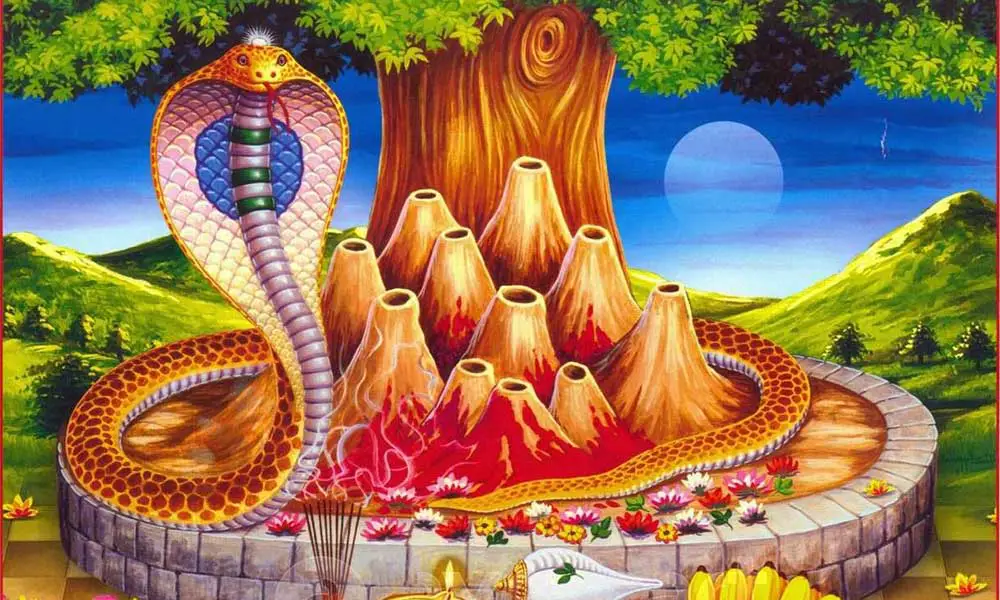
The symbolism of water
It has already been mentioned that in ancient texts the homes of nāgas and asuras were not found underground, but under water: specifically, the nāgas lived in rivers and lakes, while the asuras were confined to the great ocean which, according to ancient Buddhist cosmology, surrounded the emerged lands. It must be said though these realms were never described as actually underwater: in one of the many versions of the expulsion from paradise, for example, it is said that Indra defeated the asuras by making them drunk and then throwing them down from Mount Meru into the ocean while they slept; however, the asuras would have realized this only some time later, noticing the differences in the flowering of the cittapātalī trees (which in fact grow in the realm of the asuras) compared to that of an apparently very similar plant species, the āricchattaka trees which they are found only in heaven.
Even descriptions of the nāga realm always seem to refer to an open-air place. In short, one gets the impression that the idea of underwater worlds is to be understood more symbolically than literally: just as the surface of the water reflects the images of our world, so the various planes of existence of Buddhist cosmology are the mutual reflection of each other, obviously with qualitative differences that become more and more marked as we proceed towards the “up” or “down” to the extremes of heaven and hell. If we were to borrow a term from modern science fiction we would talk about parallel universes; but from another point of view Buddhism actually describes un unique world that is perceived differently by different categories of beings depending on their karmic propensities.
Be that as it may, the symbolism related to water it did not necessarily disappear even when nāga and asura in tantric texts were moved from the underwater world to the underground one. According to the etymology accepted by the ancient Sanskritists the term pātāla itself would have a connection with the element water deriving from patanti alam or "well watered", and indeed in certain cosmological accounts it is said that the celestial equivalent of the sacred river Ganges, sometimes called Bhogavatī, flows in the pātālas.
The famous asura cave at the Pema Ösel monastery in Pharping (Nepal), where Padmasambhāva meditated on and subdued a local female deity, he would communicate with large underground rivers connected with other places of worship e miraculous sources of the world; and also Vajrakumāra, hypostasis of the Bodhisattva Vajrapāṇi invoked in Kaṇikrodha in relation to the practice of pātālasiddhi, it is explicitly associated with waters (in particular ocean waves) and more generally with control over the water element; the practitioner who masters the power of his mantra "will be able to find hidden treasures, break the sealed gates of the asuras, dry up the rivers and stop the flow of waters."

Śambhala and the underworld
References to a underground world populated by superhuman beings brings to mind one of the best-known Buddhist myths in the Western world, that of the occult kingdom of Shambhala which is discussed in Kālacakratantra. In reality it must be said that the version of Śambhala presented in the traditional texts is apparently not connected to the subsoil: it is rather a very distant country (generally in a northerly direction) but still existing on the earth's surface that only initiates can reach. The idea of a Śambhala capital of the underworld (if not even of Hollow earth) was probably born due to interference with another mythical tradition, that ofNeedles; tradition that European travelers in the late XNUMXth and early XNUMXth centuries like Joseph Alexandre Saint-Yves e Ferdynand Antoni Ossendowski attributed (whether legitimately or not is still the subject of discussion) to Mongolian Buddhism, but of which there are actually no traces in the doctrinal texts that have come down to us.
However, a possible link between the pātāla and the kingdom of Śambhala cannot be ruled out, given some parallels that actually exist between the two traditions. First, the esoteric-initiatory aspect: just read a few pages of Śambha-la'i lam yig (“Description of the Path to Śambhala”) by the third Panchen Lama to realize that it is not a guide for a travel itinerary to be undertaken exclusively in the physical world. The pilgrim towards Śambhala must know the mantras and protection formulas, build magical instruments, make offerings to the tutelary spirits, dominate the disturbing or terrifying apparitions that appear to him, subdue a special category of female supernatural beings which in this case are defined Vajrayogini... in short, the path to Śambhala is not that different from the one that leads to the asura palaces.
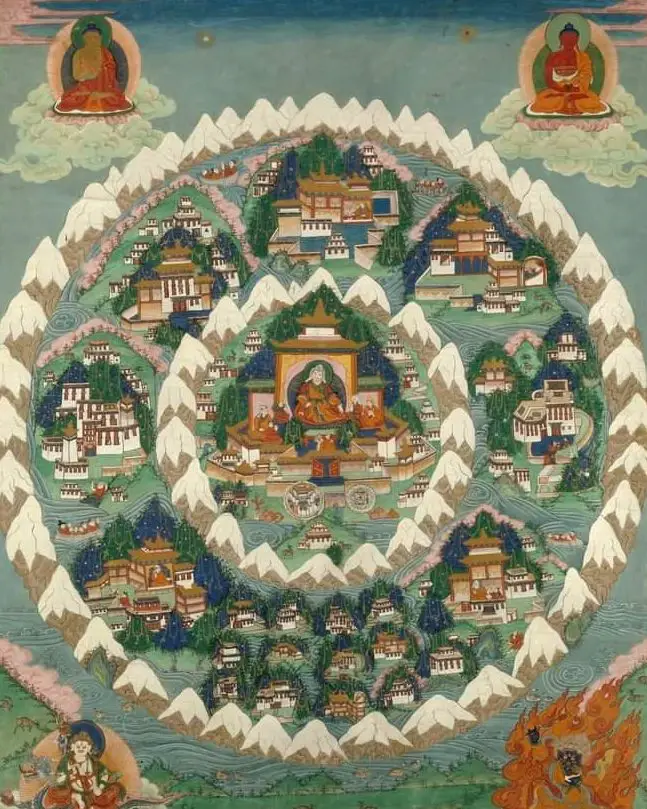
Then there is the eschatological question to consider. We have seen previously that one of the central aspects of Buddhist mythology linked to the underworld is that of the wait for Maitreya Buddha, who will come to Earth to renew the Doctrine; well, it is known that in Kālacakratantra a quite similar role is played by the ruler of Śambhala, Rudra Chakrin, which in turn corresponds to Kalki Avatāra of the Hindu version of Śambhala and also al King of the World spoken of in the myths and legends of Agarthi.
Finally, let us remember the entirely Tibetan tradition of gTer gnas o “treasure places” which only a mix equipped with specific knowledge and magical formulas can access: here are the gTer but, the hidden treasures which can be texts or objects of sacred significance (remember the precious jewels but also the pharmacological and alchemical products of the asuras and nāgas). gTer gnas are often made up of caves or secret valleys that the great mystic Padmasambhāva or some of his disciples would have hidden in very remote times behind a sort of magical curtain impenetrable to anyone except predestined people; in this regard we mention an episode that occurred to the explorer in Tibet Alexandra David-Neel, who reports having received as a gift from a mutégspa (a singer specializing in epics) a beautiful blue flower which in no way could have bloomed in that particular season of the year and at that altitude.
Il mutégspa, described by the author as a mysterious individual who often disappeared from circulation for long periods of time, claimed to be able to go to none other than the court of king Gesar of Ling, hero of a very popular Tibetan epic cycle who still lives today together with his warriors hidden somewhere place accessible only to initiates, waiting for the end of this dark age to ride back into the world and bring back peace and justice. And precisely from the hands of Gesar himself, the singer claimed, that floral homage had arrived. Here too the similarities both with the mythology of the pātāla and with the tantric cycles associated with the secret land of Śambhala seem too evident to be ignored, almost as if we were faced with a multitude of variations of the same theme.
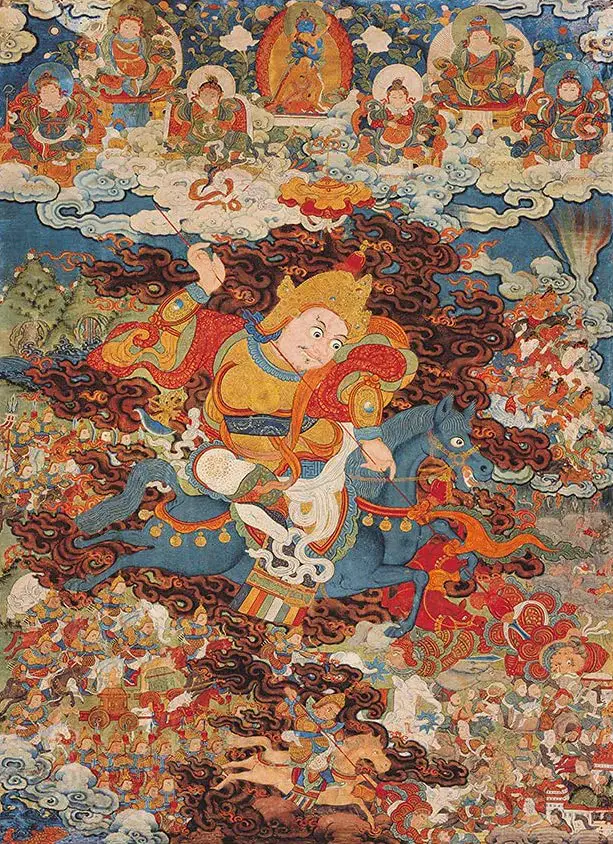
A question still open
One fundamental question still remains to be asked, viz whether the descent into the underworld occurred physically or not. It seems very likely that the practice of pātālasiddhi involved the practitioner achieving an altered state of consciousness, perhaps through the well-known technique of repeating mantras accompanied by dance; something similar, in short, to travel to the afterlife in a trance state still practiced by the shamans of some Asian populations.
However, the texts' insistence that the rites should be celebrated at cave of the asuras, therefore presumably in the vicinity or inside the underground cavities that tradition associated with these beings, suggests that the descent into the subsoil could also be at least partly physical, and that the situation of sensory isolation and the physiological reactions due to being in a closed underground environment served to accentuate the phenomenon of alteration of perceptions. Furthermore, the practice of Tibetan anchorites of isolating themselves even for very long periods of time in small cells which are often obtained from natural caves is well known.
Unfortunately, however, a definitive answer to this question will probably never be given. The practice of pātālasiddhi in the context of Buddhist tantrism it was gradually increasingly marginalized starting from the end of the first millennium AD until it essentially disappeared from today's practice, although, as seen, some fundamental themes were also preserved in much later traditions.
In addition to the general growing disinterest in these doctrines, in the specific case of Tibet it is also possible that the persecutions of Buddhism by King Glang dar ma's, the subsequent century and a half of civil war and the tendencies of resettlement on more orthodox criteria of Buddhist doctrine by masters such as Atiśa and Marpa who reintroduced it into Tibetan territory contributed to creating a break with the past beyond which the teachings in question, at least in their complete and coherent form, did not survive.
In the absence of the possibility of verifying directly in the field how these rites actually took place, we are therefore necessarily forced to rely on possible parallels with the practices present in other traditions (such as the aforementioned shamanism) and, finally, to our conjectures; aware, however, that the ultimate secrets of the asura caves will perhaps remain forever denied to the men of the surface world.
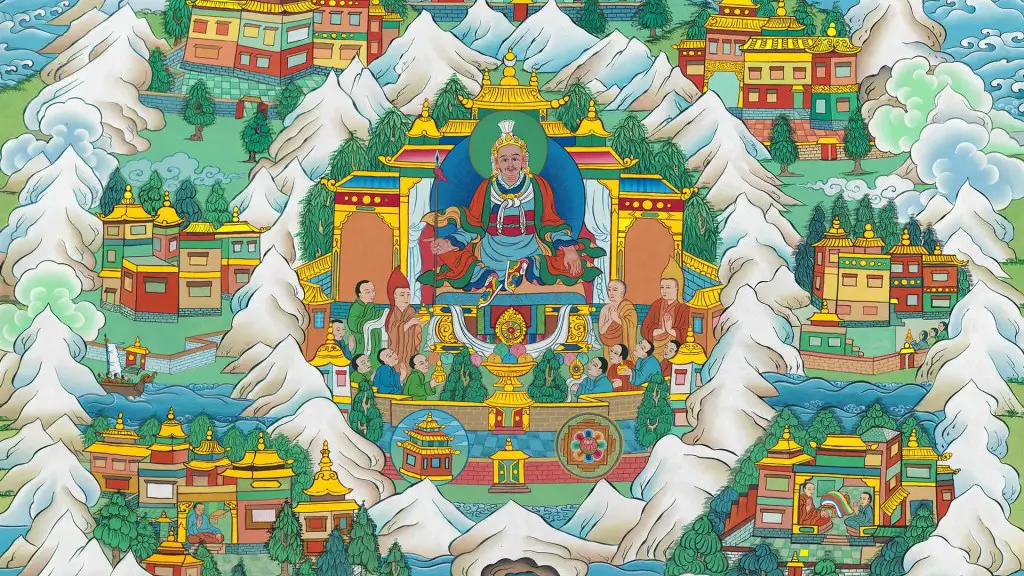
BIBLIOGRAPHY
Punnadhammo Mahāthero “The Buddhist Cosmos, a Comprehensive Survey of the Early Buddhist Worldview according to Theravāda and Sarvāstivāda Sources”, Arrow River Fores Hermitage 2018
Mayer, Robert “The Importance of the Underworlds: Asuras' Caves in Buddhism, and Some Other Themes in Early Buddhist Tantras Reminiscent of the Later Padmasambhava Legends,” in Journal of the International Association of Tibetan Studies no. 3, Tibetan and Himalayan Digital Library December 2007
Néel, Alexandra David and Lama Yongden “La vie suhumaine de Guesar de Ling”, du Rochet, Monaco 1978
Rivière, Jean M. “Kālacakra, initiation tantrique du Dalai Lama”, Robert Laffont, Paris 1985
Tucci, Giuseppe “Die Religionen Tibets”, W. Kholhammer GmhH, Stuttgart 1970
